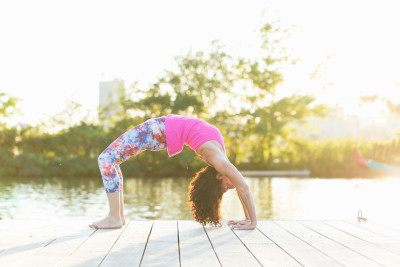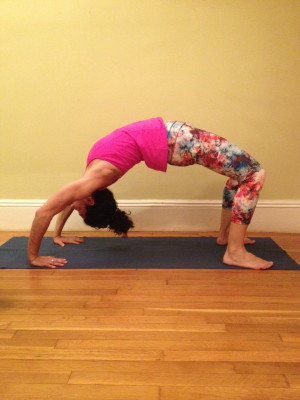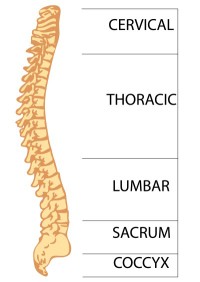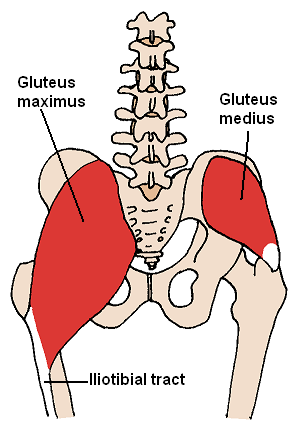
One of the interesting things about muscles is they work in pairs. When one muscle does one thing, a nearby muscle will do something different, perhaps the opposite. One of the simplest examples of this is the biceps and the triceps. The biceps flexes the elbow; the triceps extends it. You can see the two muscles here, the biceps first (as viewed from the front) and then the triceps (as viewed from the back):


Sometimes muscles that are close to each other don’t do the opposite thing but since they are around the same joint, they do different things to that joint. Take the gluteus maximus. It extends the hip, as in Wheel Pose:

And the muscle, as you might know, is the big muscle on the seat of your body, or the back of your pelvis:

As you can see, it’s a BIG muscle. So when it does its thing, or contracts (versus stretch), it’s pretty powerful.
When we do a big backbend like Wheel as pictured above, we want to use the power of the gluteus maximus to extend the hip but we want to minimize it’s action of external rotation of the hip. External rotation is when the hips and the feet turn out. It would look something like this:

One of the harder things to explain during class without a visual like I have here, is the reason we don’t want to turn the feet out. It has to do with preventing lower back compression. If you think of how the lower back is arranged, you have the spine that sits in the pelvis and at the base of the spine is the triangular shaped sacrum:

The more your turn your feet out, the greater compression on the lower part of the spine. It’s like a vise is squeezing the sacrum as the degree of external rotation increases. In addition, as you use your gluteus maximus to extend the hip, it’s contracting because it’s working, versus passively stretching. So, that, combined with the mere shape of the spine and the external rotation…. all this combines to create a LOT of pressure. That’s why sometimes students complain of lower back pain when trying to do Wheel. (keep in mind this is also due to the degree of tightness in the hip flexors and the shoulders and the fact that the hands and feet are flat to the floor versus lifting the heels to release some of the pressure).
So, now that we know the reason the hips are prone to externally rotating ( the gluteus maximus extends the hip but also turns the feet out) and we know that external rotation is bad for us when we are in hip extension (due to the compression on the lower spine), we need to find a muscle that does something to counteract not the EXTENSION but the EXTERNAL ROTATION. Â And that muscle, my friends, is the gluteus medius:

The gluteus medius sits a little higher to the gluteus maximus and is a bit small. The posterior third of it is covered by the gluteus maximus. When the hip extends, the gluteus medius internally rotates the thigh. When the thighs turn IN when you backBEND, the pressure on the sacrum decreases. You can think of it as if the vise in the description above is loosened.
Sometimes it’s hard to keep this focus on the thighs because there is so much going on in this pose. To help, put a foam block between your thighs as you come up. Bring a little attention to your feet and turn them a bit inward; the resulting effort may turn them out but that might bring them just to neutral (straight).
Creating healthier, more accessible backbends starts with this foot positioning. Â Once you understand how the muscles in the hip joint work, you can apply the proper actions in the pose.

Thank you.
Sure! Glad you enjoyed it.